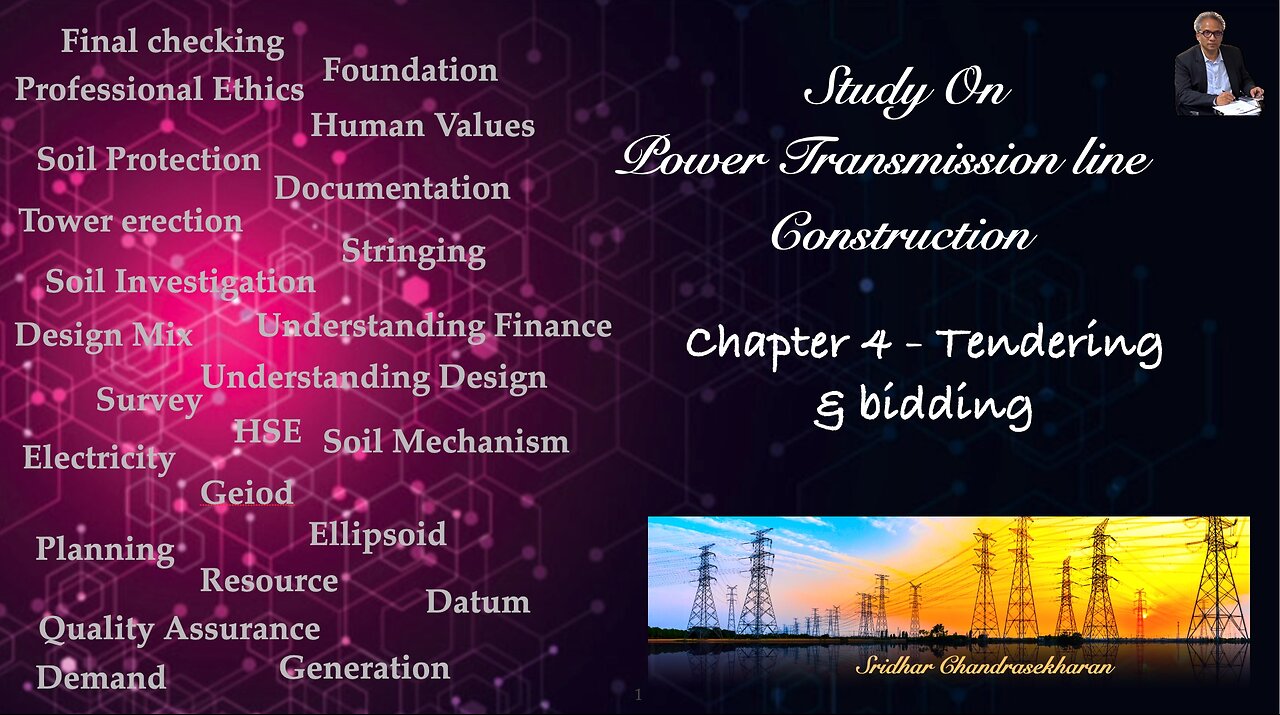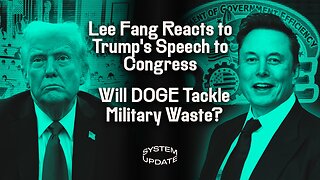Premium Only Content

Chapter 4 - Tendering & Bidding ( Study On Power transmission line Construction).
Till now, I have uploaded three chapters, and today we move to Chapter Four. Below is a summary of the previous chapters and an introduction to this new chapter:
Chapter 1: We began with the basics of electricity, covering fundamental concepts such as atoms, the nucleus, and electrons. The chapter explained electron flow in conductors and insulators and introduced key concepts like the electric field, magnetic field, and the electromagnetic field. We also explored how electricity is generated, including the principles of current, voltage, and the differences between alternating current (AC) and direct current (DC). Additionally, the chapter touched upon the production of single-phase and three-phase electricity, forming a strong foundation for understanding electrical systems.
Chapter 2, Part 1: In the first part of Chapter 2, we dived into the topic of power generation, focusing on global electricity generation trends and the functioning of thermal power plants. This included a detailed look at key components such as turbines and generators, along with the role of fossil fuels like coal, natural gas, and oil in electricity production.
Chapter 2, Part 2: Continuing with power generation, the second part of Chapter 2 explored nuclear power generation and various forms of renewable energy. These included solar, wind, hydro, geothermal, and biomass power generation methods. Emerging technologies like hydrogen fuel cells, tidal energy, and wave energy were also introduced, offering a glimpse into the future of sustainable power production.
Chapter 3: We shifted focus to the prerequisite activities for project development, emphasizing the demand for transmission lines, their critical requirements, and the meticulous planning involved in their development. This chapter laid the groundwork for understanding the role of transmission infrastructure in ensuring electricity reaches end-users efficiently and reliably.
Chapter 4: Now, in Chapter Four, we will delve into the Project Tendering Process and the Contractor Bidding Process. This chapter aims to provide valuable insights for project engineers by illustrating how projects are tendered by clients and the structured bidding processes through which contractors secure these projects. By the end of this chapter, you will gain a clear understanding of how the tendering and bidding process functions, the roles of various stakeholders, and the steps involved in selecting and awarding contracts for successful project execution.
-
![🔴[LIVE TRADING] Time To Buy The Stock Market Dip?! || The MK Show](https://1a-1791.com/video/fwe1/31/s8/1/K/O/5/p/KO5py.0kob-small-The-MK-Show-Mar.-6th.jpg) LIVE
LIVE
Matt Kohrs
8 hours ago🔴[LIVE TRADING] Time To Buy The Stock Market Dip?! || The MK Show
471 watching -
 LIVE
LIVE
BonginoReport
2 hours agoJoe Rogan Brings Back Pizzagate (Ep.154) - 03/06/2025
7,815 watching -
 LIVE
LIVE
Wendy Bell Radio
4 hours agoStranded & Abandoned By The Democrat Party
4,771 watching -
 6:05:13
6:05:13
Akademiks
16 hours agoDay 1/30. Drake Drops lawsuit vs iHeartMedia? Offset and Cardi Calls it Quits. 50 v Jim Jones?
205K13 -
 2:55:11
2:55:11
TimcastIRL
13 hours agoDemocrat TANTRUM At Trump Speech BACKFIRES, Trump Polls UP, Dems UNDER FIRE w/67Kevin | Timcast IRL
175K119 -
 1:25:23
1:25:23
Kim Iversen
15 hours agoFrom Doctor to Political Prisoner: Dr. Simone Gold on COVID Lies, January 6th, and Medical Tyranny
89.2K87 -
 2:09:28
2:09:28
Melonie Mac
17 hours agoGo Boom Live Ep 39!
91.9K14 -
 1:04:36
1:04:36
Man in America
18 hours ago🚨 BREAKING: Dr. Robert Young JAILED! Medical Tyrants Will Do ANYTHING to Silence Truth
112K28 -
 3:01:44
3:01:44
I_Came_With_Fire_Podcast
16 hours agoPanama CANAL BlackROCKED | Left of PODCASTING | Ukraine AID GONE
60.4K7 -
 45:56
45:56
Glenn Greenwald
16 hours agoLee Fang Reacts to Trump's Speech to Congress; Will DOGE Tackle Military Waste? | SYSTEM UPDATE #418
148K96